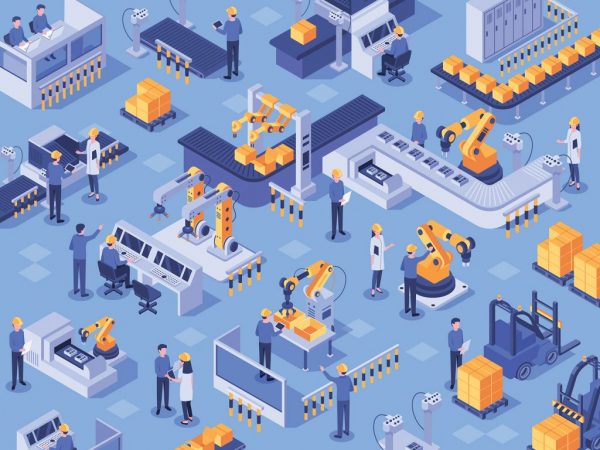
How manufacturers can use maintenance to get an advantage in post-crisis times
by Talmage Wagstaff, Co-Founder and CEO of Redlist
CEO of Redlist provides advice around using pandemic-related downtime to perform maintenance to gain a competitive advantage.

PHOTO: Manufacturing/Getty Images
Although most manufacturing facilities had preventative maintenance plans in place and solidly adhered to them prior to the pandemic, returning to a post-crisis facility may be a much more regimented and driven atmosphere. While many of the staff were able to perform their jobs from home, critical workers on the production lines, as well as maintenance staff, were unable to leave the facility.
The most proactive facilities used the time when manufacturing needs weren’t quite as high to prepare themselves for the return to normal life and consumer demands.
While You Were Out…
The production facilities that weren’t making front line items had some slack in their production schedule, maybe even for the first time since the facility opened its doors. As any production manager knows, there is no such thing as downtime. There is simply a small window where the orders haven’t come in yet.
Essential staff in every production facility typically includes an engineer, a mechanic, and several of the production management staff. In Emergency Contingency Plans, they are known as the “Point Of Contact” – in an emergency, they will be the staff staying behind to turn off the machines and make sure no open flames are left to burn the facility down while the facility is being evacuated. During the pandemic, you could find the contingency team looking around the production floor and devising a plan to prepare themselves for the influx of orders when they were given the approval to operate as usual.
Some of the facilities that were left without any orders to fill took advantage of the downtime, and their maintenance staff was able to deal with their production machines. The result is a facility that is able to operate at full speed with all machines running on spec., producing a quality product that is rolling out with nearly zero maintenance-related downtime affecting the production.
How To Use This Model Post Crisis
If you are in an industry that is still feeling the sting of unplanned downtime, the best use of your labor dollars at this point could be overhauling your equipment – basically, you’re preparing to run full speed once you have orders on the board. Machinery that has been properly maintained to manufacturer specifications will need zero downtime for unplanned maintenance.
If your industry is back to business as usual, get ahead of the busy season if at all possible, while everyone is still running at half pace. Allow your maintenance team to perform annual preventive maintenance on all equipment. Prepare as much of your equipment as realistically possible to run around the clock, without the need to perform minute repairs that cost your facility valuable production hours.
Don’t Forget The Safety Standpoint
There are many manufacturing facilities that will face much more scrutiny from inspectors and government agencies post-crisis. That is the nature of a recovering public: they don’t want to risk infection again. Workers in the many branches of manufacturing may be exposed to increased testing, more in-depth and more frequent inspections. And any one of the involved agencies may be their new supervisor. With this new microscope viewing of your facility, why take any extra risks? Properly maintained machines keep people safe, and that keeps liability minimized.
Don’t Spend Where You Don’t Have To
Maintenance costs are decreased 5-10 percent when a preventative maintenance program is in place. Maintenance time repairing machinery is decreased by 20-50% in those facilities. And if you’ve ever signed a mechanic’s paycheque, you know what that percentage equates to in overtime dollars. Don’t spend your money irrationally while the economy is taking unprecedented turns. Use your maintenance team to assist you in getting your business back to its production and financial goals. Preventative maintenance and facility overhauls, when feasible, are an advisable way to make that happen.